What Makes 1045 Carbon Steel a Preferred Choice?
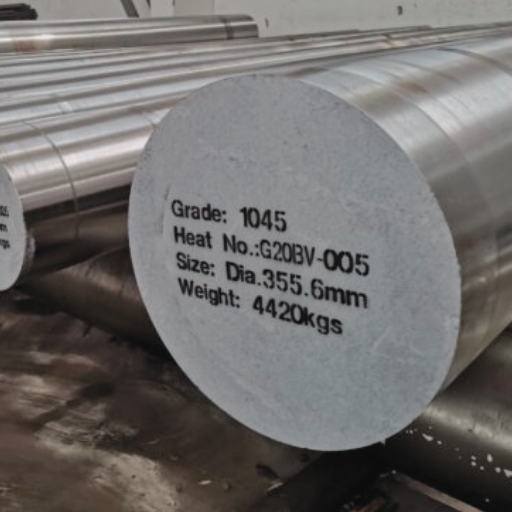
Image source: https://www.round-bars.com
Understanding the chemical composition of 1045 steel
The mechanical properties that stand out in 1045 carbon steel
Comparing medium carbon content: Why 1045 is superior
Heat Treatment Processes for 1045 Steel: Enhancing Its Qualities
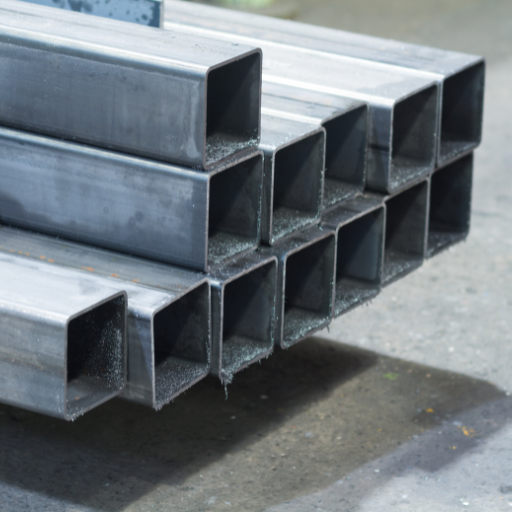
In order to improve the properties of 1045 steel, various heat treatment processes can be employed. One of them is annealing which requires heating the steel to within the temperature range of 1450-1600°F and then cooling it slowly. This process enhances machinability and eliminates internal stresses. Another effective method is normalizing that involves heating the steel to about 1600-1700°F before allowing it to cool in air. It is used for refining grain structure thereby improving both strength and toughness.
Quenching and tempering are other vital heat treatments as well. The quenching process entails heating steel up to around 1500-1600°F where after it is suddenly cooled using water or oil, increasing hardness significantly. Nonetheless, this approach can lead to brittleness of 1045 steel hence requiring tempering afterwards. Tempering on the other hand entails reheating quenched steels at about 400-1200°F after which they are cooled gradually. This phase reduces susceptibility to brittle cracking while retaining elevated hardness levels.
These heat treatment processes collectively optimize mechanical properties of carbon steel; thus making it suitable for heavy-duty industrial applications.
Best practices for hardening and tempering 1045 steel
To harden 1045 steel, it is necessary to uniformly heat the material to an austenitizing temperature. The typical ranges are between 1475-1550°F. Once the steel gets to this point, it must rapidly be quenched in water or oil for hardness to be gained. To avoid internal stresses and minimize the risk of cracking, uniform heating and quenching should be ensured.
The next step after quenching is tempering, which is crucial for reducing brittleness while retaining hardness. This usually happens at temperatures ranging from 400-1200°F on a scale of 1045 steel depending on how tough or hard one wishes them to be. The specific value will depend on the application; however, it is generally known that lower tempering temperatures preserve higher hardness while higher ones increase toughness.
Other best practices involve monitoring and controlling heating and cooling rates for consistency and uniformity purposes. Additionally, overheating should be avoided as it results in grain growth and poor mechanical properties. Precise temperature control equipment use during heat treatment processes requires maintaining clean work environments to maximize output.
Taking account of these principles helps in fine tuning the mechanical properties of 1045 steel thus making them stand up against heavy duty requirements in different industries.
How heat treatment affects tensile strength and hardness
Heat treating processes, such as hardening and tempering, have a major effect on the mechanical properties of steel; among them tensile strength and hardness. Hardening boosts tensile strength and hardness by rapidly quenching it after heating to austenitizing temperature forming martensite which is a hard and brittle microstructure that enhances its strength. Nonetheless, too much brittleness can arise because of as-quenching.
Tempering is essential in achieving the right compromise between hardness and toughness. After quenching the steel, it is reheated to some lower temperature range (400-1200°F) whereby brittleness is reduced but still maintain high levels of hardness. The tempering temperature determines the final properties: low temperatures produce higher hardness making it useful for wear resistant applications while high temperatures improve toughness needed in shock absorbing components.
Hence heat treatment can be employed to adjust appropriately 1045 steel’s tensile strength and hardness so as to meet particular application requirements as discussed widely across leading industrial resources.
The role of heat treatment in improving weldability and machinability
The Art of Welding 1045 Carbon Steel
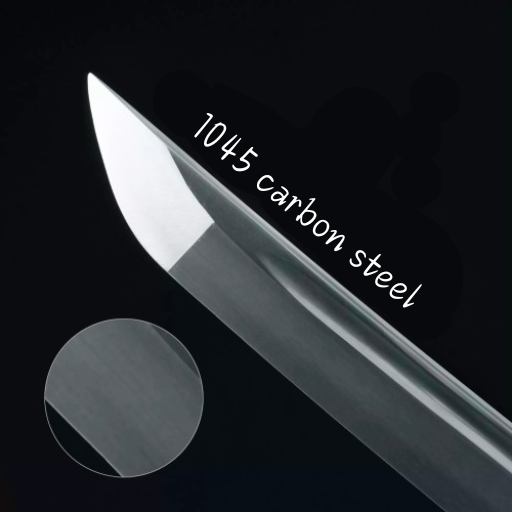
1045 carbon steel welding calls for in-depth knowledge of its features to guarantee the creation of sturdy and defect-free joints. The medium level of carbon content possessed by 1045 steel makes its weldability average, hence requiring pre-heating and post-weld heat treatment to avoid cracks and others.
Preheating: It helps reduce thermal gradient during welding, which reduces the chances of having thermal stress and cracking. Depending on section thickness and complexity of the welded structure, preheat temperatures are usually within 315°C (600°F) to 650°C (1200°F).
Filler Materials: To maintain desired mechanical properties, it is important to select right filler material. With their ability to produce strong and ductile welds, low-hydrogen electrodes like E7018 are commonly recommended.
Post-Weld Heat Treatment (PWHT): Post-weld heat treatment such as tempering or stress relief improves the quality of a weld. It decreases residual stresses; increases ductility while toughness is restored.
Welding Techniques: Processes such as Gas Tungsten Arc Welding (GTAW) or Gas Metal Arc Welding (GMAW) is preferred due to their accuracy and control needed for making high quality welds on medium carbon steels like 1045.
By sticking with these practices, one can efficiently perform welding 1045 carbon steel giving rise to strong and durable connections which can be used in various engineering applications.
Preparation tips for welding 1045 steel
To help you prepare for welding 1045 steel, here are some important things to consider:
- Surface Cleaning: Make sure the surface is completely clean and free from any rust, oil or paint. A wire brush can be used to clean or alternatively a chemical cleaner should be employed.
- Preheating: For this reason, one should heat up the entire part in a uniform manner in order to avoid damaging it due to thermal shock while maintaining its integrity. Depending on thickness, preheat temperatures range between 315°C – 650°C (600°F -1200°F).
- Joint Preparation: Proper edge preparation is very important. Beveling among other techniques may be used to create a groove that would make the weld have a full penetration.
- Tack Welding: Tack welding is done so as to keep everything intact and avoid misalignment during joining of parts. In case of thermal expansion, tack welds should not be spaced too far apart.
- Selecting Filler Material: E7018 electrodes which have low hydrogen content provide excellent compatibility with mechanical properties of 1045 steels.
- Heat Control: Interpass temperature needs careful monitoring and control within specified limits. Too much heat will lead to distortion and affect the quality of the welds negatively.
- Post-Weld Cooling: Make sure that welded part is cooled down slowly and uniformly. This can be done by controlled ways such as immersing into sand pit thus reducing chances for cracks.
- PWHT (Post-Weld Heat Treatment): Temper when required or stress relieve otherwise for making weld zone tougher and more ductile after welding it with alloys like carbon steel.
Choosing the right method and filler material for welding aisi 1045 steel
Integrity and durability of a weld done on AISI 1045 steel depends on the right choice of method and filler material. Several methodologies are recommended based on industry standards and expert recommendations from top sources.
- Shielded Metal Arc Welding (SMAW): It is versatile enough to handle thicker sections hence preferred by many. For SMAW, the use of low-hydrogen electrodes such as E7018 is perfect as it results in clean welding with minimal risk of hydrogen-induced cracking.
- Gas Tungsten Arc Welding (GTAW/TIG): This is another effective method especially if one wants to deal with medium to thick sections. Filler materials such as ER70S-6 perform well in GMAW as they exhibit good wetting, low porosity, strong mechanical properties which makes them desirable.
- Gas Metal Arc Welding (GMAW/MIG): Another effective method, particularly for medium to thick sections. When using GMAW, select filler materials such as ER70S-6, which provides good wetting, low porosity, and strong mechanical properties.
- Preheat and Post-Weld Heat Treatment: Whether you choose any method for welding, you must preheat this steel to approximately 315°C to 650°C (600°F to 1200°F) before welding commences as well as conduct post-weld heat treatment such as stress relieving or tempering. These activities help get rid of residual strains and prevent cracks.
Overcoming challenges in welding higher carbon content steel
Welding of steels with high carbon content like AISI 1045 brings its unique challenges because it is more prone to cracking and hardness. Below are some ways of overcoming the problems:
- Preheating: It has already been said that preheating steel is very important; this in effect slows down cooling thereby reducing propensity for cracking and encouraging evenness in microstructure.
- Controlled Cooling: Avoid fast cooling by allowing the welded parts to cool slowly. They can be wrapped in insulating materials, as an example, so as to moderate the cooling process.
- Proper Electrode Selection: The welding electrodes or filler materials used should be compatible with high carbon steels. Use low hydrogen electrodes which will considerably reduce hydrogen-caused cracks.
- Post-Weld Heat Treatment (PWHT): After welding, annealing or normalizing processes can relieve stresses leaving behind a softer metal in addition to lowering hardening so as to enhance ductility.
- Interpass Temperature Control: The right interpass temperature must be maintained since there could be excessive heat causing unwanted alteration of microstructures and higher fragility.
Mechanical and Physical Properties that Define 1045 Carbon Steel
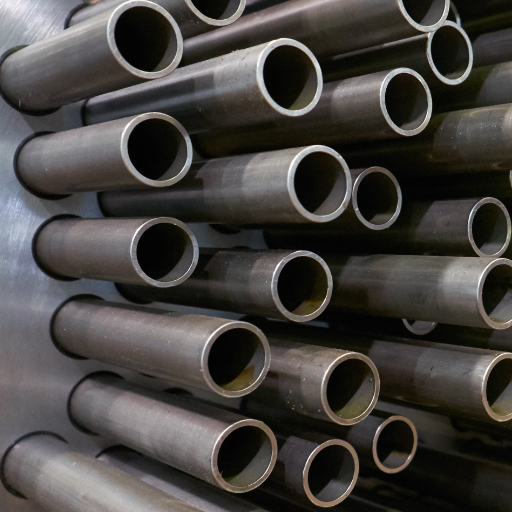
This is due to the high strength and excellent wear resistance that AISI 1045 carbon steel possesses, thus making it suitable for various industrial applications. Some of these important mechanical and physical properties are as follows:
- Hardness: Depending on heat treatment process, Brinell hardness of 1045 steel falls within 170-210.
- Tensile Strength: Generally, this kind of steel has a tensile strength ranging from about 570-700 MPa (82.7 – 101.5 ksi), which makes it ideal for a moderate level of toughness and rigidity applications.
- Yield Strength: Its yield strength usually ranges between 300-515 MPa (43.5 – 74.7 ksi) meaning that it can resist tremendous loads without any permanent deformation.
- Elongation: It offers good ductility and formability with approximately an elongation percentage in 2 inches (50mm) of about 18-22% when annealed.
- Modulus of Elasticity: Maintaining excellent rigidity and elasticity under stress, its modulus of elasticity is around 200 GPa (29,000 ksi).
- Density: Like most non-alloy steels, its density is almost equal to approximately7.85 g/cm³ (0.284 lb/in³).
- Thermal Conductivity: This is attributed to its thermal conductivity which stands at around49.8 W/m·K.
- Machinability and Weldability: However machinable and weldable generally speaking, pre-and post-weld heating processes are needed in order to prevent cracking caused by carbon content which reaches up to a maximum value in case of its improper selection during manufacturing techniques.
Exploring the high tensile strength and wear resistance of 1045 steel
Furthermore, the wear resistance of 1045 steel stands out because of its balanced structure as well as heat treatment techniques used. This reduces the need for regular part replacement and servicing as it extends the life span of parts by reducing their vulnerability to abrasion or wearing out thereby enhancing longevity. For this reason, such wear parts as pins, shafts, machinery components are often made of material comprised of at least these properties: 1045 carbon steel combines both strength and endurance needed in these kinds of parts . The above qualities present 1045 carbon steel differently when discussed separately hence showing how versatile it can be applied in industries.
Impact of medium carbon content on physical properties
The balance between strength and ductility in medium carbon steel
Industrial Applications and Machinability of 1045 Carbon Steel
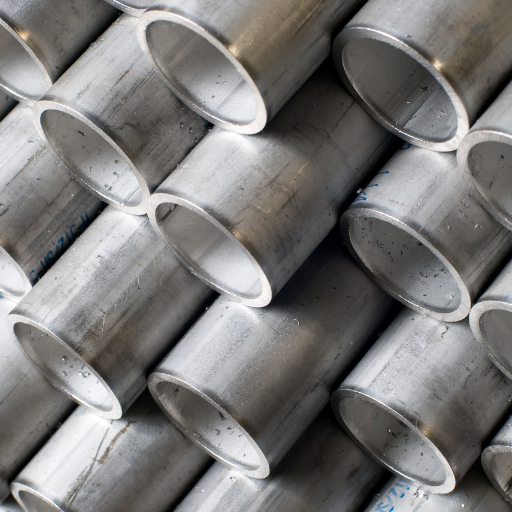
The industrial applications of 1045 carbon steel are wide due to its excellent strength and machinability. Its medium carbon content makes it good for such components as gears, axles, crankshafts, nuts, bolts, and couplings which have to be durable enough to withstand high-stress loadings and impact.
Machinability wise the 1045 carbon steel is one of the best. It is about half that of B1112 steel which is the standard by which machinability ratings are usually set. It can be effectively machined in the annealed condition as well as normalized or hot-rolled forms using conventional machining processes. Consequently, it can be easily cut, drilled, turned, and milled hence a versatile option for manufacturing as well as mechanical engineering applications. Additionally heat treatments like hardening and tempering can improve its machinability further and adjust other mechanical properties so that they suit any necessary specifications better than before. This adaptability reinforces 1045 carbon steel’s usefulness across numerous industries as a versatile yet steadfast material.
Why 1045 is widely chosen for shafts, axles, and gears
The ease of machining 1045 steel: What makes it so machinable?
Case studies: Successful industrial uses of 1045 carbon steel
Here, the main advantage of heat-treatable quality 1045 Steel lies in its improved surface hardness while keeping a tough core as well. Moreover, this material is also utilized in making dies and molds for industries because it is easily workable into thin components withstanding high forces without breaking apart over time. These are some examples illustrating how 1045 carbon steel’s versatile properties fit into the demanding requirements of different sectors worldwide confirming its reliability as a material choice.
Future Outlook: Innovations and Trends in Using 1045 Carbon Steel
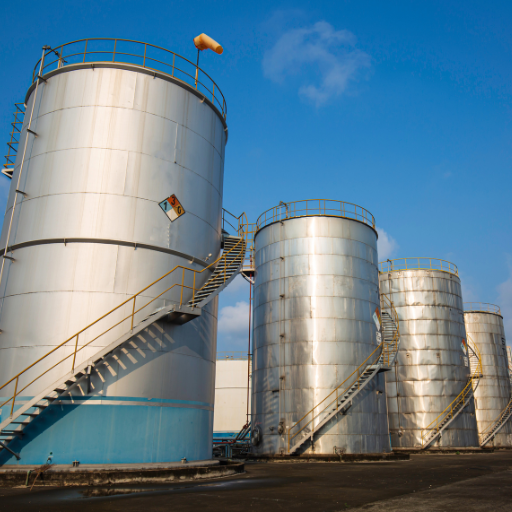
The evolution of 1045 carbon steel use is mainly driven by improvements in metallurgical processes and the upsurge in demand for materials that have high performance. Recent advancements focus on improving the properties of this alloy to make it durable through better heating procedures, like surface hardening using laser or induction techniques that offer stronger wear resistance. Moreover, PVD (Physical Vapor Deposition) coatings are one of the methods used in modifying this metal’s surface to increase its life span without altering its workability.
Sustainability is another notable shift with the field giving greater attention towards environmentally friendly practices. These include advances in recycling options as well as invention of cleaner production technologies which are meant to reduce the impact on environment from manufacturing 1045 carbon steel.
This has seen digitalization, combined with Industry 4.0 revolutionize production environments. Real time monitoring and data analysis allow for fine tuning processing conditions that ensure consistent quality and performance of components made of 1045 carbon steel. With such innovative trends, a better future awaits with regard to performance improvement, increased sustainability and greater efficiency of industrial end-uses for 1045 carbon steel.
The evolving landscape of steel alloy technology and 1045’s place in it
Steel alloy technology is an ever-changing landscape driven by innovations that aim at meeting the increasing demand for versatile and high performance materials. When it comes to this, 1045 carbon steel still has a significant role to play because it combines well its exceptional balance of strength, machinability, and toughness. Such advancements in modern heat treatment processes as induction hardening or laser hardening have greatly improved its mechanical properties thus making it more suitable for application where superior wear resistance is required. Additionally, PVD is commonly used for surface treatments and coatings aimed at enhancing durability without sacrificing machinability.
The steel industry is being reshaped by sustainability efforts that bring in eco-friendly manufacturing techniques, recycling innovations, and cleaner technologies. These undertakings are crucial to minimizing the environmental footprint of 1045 carbon steel production. With reference to principles of Industry 4.0, real-time monitoring as well as data analysis are transforming production process which guarantees consistent quality and performance levels. Consequently, these advances in technology and sustainability trends make 1045 carbon steel likely to continue as one of the most important materials in industrial applications.
Anticipating changes in demand for medium carbon steel in various industries
The need for medium carbon steel, which includes 1045 carbon steel, is expected to change as technology advances and industry needs change. The automobile sector has a growing appetite for light weight, high-strength materials that can enhance fuel economy and reduce discharges. Automotive gears, shafts and cranks can still be made by using medium carbon steel that combines strength with machinability.
In the construction industry, preference for durable high performing materials is growing based on sustainable building practices. Modern heat treatments have made structural applications and machines possible due to the toughness of medium carbon steel through enhanced mechanical properties.
Medium carbon steel demand will also be impacted by stringent material performance norms in the aerospace sector. Therefore, enhanced attributes achieved using advanced surface treatments and coatings such as improved wear resistance are important in aerospace manufacturing where reliability is vital.
Also, smart manufacturing technologies will likely see an increase in the role of medium carbon steel as it produces precision parts and machinery components. For instance, processes that require robustness during operations while maintaining product quality are being pursued by the manufacturing industry moving towards automated systems and precision engineering.
New technologies enhancing the characteristics of 1045 carbon steel
Various high-performance applications are pushing the development of 1045 carbon steel’s characteristics through numerous innovative technologies. This is done through techniques like induction hardening and carburizing for advanced heat treatment, which increases surface hardness and enhances its wear resistance. Induction hardening ensures that the entire surface of the steel is uniformly hardened while maintaining a tough core by enabling control over heating processes. Carburizing involves diffusing carbon into the steel surface at high temperatures, producing a hard exterior with high wear resistance.
Another important technology used in enhancing this material is cryogenic treatment where martensite formation is induced by cooling, at subzero temperature, remaining austenite as well as improving toughness and dimensional stability of steel. Moreover, today’s coating technologies such as PVD (Physical Vapor Deposition) or CVD (Chemical Vapor Deposition) are also applied on this particular grade to guard against wear and corrosion thereby prolonging the material service life.
Moreover,various metallurgical developments for instance; vacuum arc remelting and electron beam remelting have raised purity levels and made microstructure of 1045 carbon more uniformed.VAR or EBR melts eliminate impurities to make better mechanical properties.
Similarly, there has been promise of enhancing mechanical properties of these materials using nanotechnology like nano-sized particles embedded within the matrix of such steels. At this microscopic level, it can be seen that strength, hardness, as well as deformation resistance are improved.
These technological advances help to extend what can be done with media-steel 1045 from various performance limits imposed on it thus making it a more versatile and dependable material for many types of applications which aim at increasing performance capabilities.
Reference sources
-
AZoM – AISI 1045 Medium Carbon Steel (UNS G10450)
- AZoM provides an in-depth overview of AISI 1045 carbon steel, detailing its chemical composition, mechanical properties, and typical applications. This resource is essential for understanding the material’s potential in various engineering contexts.
- Source: AZoM
-
Total Materia – 1045 Carbon Steel: Technical Specifications and Applications
- Total Materia provides a thorough technical datasheet for 1045 carbon steel, covering chemical composition, mechanical properties, and common applications. This source is crucial for engineers seeking precise and reliable information.
- Source: Total Materia
-
Engineering Edge – Understanding 1045 Carbon Steel: Properties and Applications
- Engineering Edge delivers an authoritative examination of 1045 carbon steel, discussing its properties, advantages, and typical uses. This article offers practical insights into how this material can be effectively utilized in engineering projects.
- Source: Engineering Edge
Frequently Asked Questions (FAQs)
Q: What defines the steel grade known as 1045 carbon steel?
A: 1045 carbon steel is a medium tensile steel supplied in a hot rolled or normalized condition. It features a tensile strength of 570 – 700 MPa and Brinell hardness range of 170 – 210 in either condition, making it a popular choice for applications requiring good strength and impact properties. It has a carbon content of approximately 0.45%, positioning it between low carbon and higher carbon steel grades.
Q: How does the machinability of 1045 carbon steel compare to other types?
A: 1045 carbon steel is known for its good machinability, due in part to its medium tensile strength and carbon content. This makes it easier to form and shape compared to higher carbon steels, while still maintaining good strength. It’s often a preferred steel for manufacturing parts that require precise shapes and sizes.
Q: In what applications is 1045 steel commonly used?
A: AISI 1045 is widely used in the automotive, agriculture, and mining industries for components that require higher strength and impact resistance. This includes gears, bolts, structural parts, and machinery parts. It’s also popular in the creation of axes, blades, and other high-strength hand tools. The steel’s good machinability and weldability further broaden its range of applications.
Q: Can 1045 carbon steel be used to forge a functional sword?
A: Yes, 1045 carbon steel is suitable for forging functional swords due to its good strength and impact properties. It possesses enough carbon to harden well in a quench, making it capable of holding a sharp edge while remaining ductile enough to withstand the stresses of combat. However, for high-end or professional use, alloys with higher carbon content or added elements for improved hardness and wear resistance might be preferred.
Q: What is the difference between 1045 hot rolled and cold drawn steel bars?
A: The main difference between hot rolled and cold drawn 1045 steel bars lies in their surface finish, dimensional accuracy, and mechanical properties. Hot rolled steel bars are made at high temperatures, which results in a rough surface finish but easier to form and shape. Cold drawn steel bars, on the other hand, have a higher dimensional accuracy, a smoother surface finish, and enhanced mechanical properties such as higher tensile strength due to the drawing process.
Q: Why is 1045 carbon steel considered a good choice for medium tensile strength applications?
A: 1045 steel is a medium tensile steel, offering a balanced combination of strength and ductility. With a tensile strength of 570 – 700 MPa, it can endure significant stress and strain without failing, making it an excellent choice for parts requiring medium tensile strength. Its good machinability and weldability further enhance its suitability for a wide range of medium-strength applications.
Q: How is 1045 carbon steel heat treated for maximum hardness?
A: To achieve maximum hardness, 1045 carbon steel should be heat treated by austenitizing at around 840°C – 870°C, followed by quenching in water or brine. This process will increase its hardness significantly; however, it may require tempering at a lower temperature to reduce brittleness and improve toughness. The steel should be soaked for 10 minutes per 25mm of section and cool in still air for tempering.
Q: Can 1045 carbon steel be induction hardened?
A: Yes, 1045 carbon steel can be successfully induction hardened, which involves heating the steel using electromagnetic induction followed by rapid cooling or quenching to increase the hardness and strength on the surface layer of the steel while maintaining a ductile core. This process is suitable for applications requiring a wear-resistant surface and is commonly used for shafts, gears, and other components that experience high wear.








